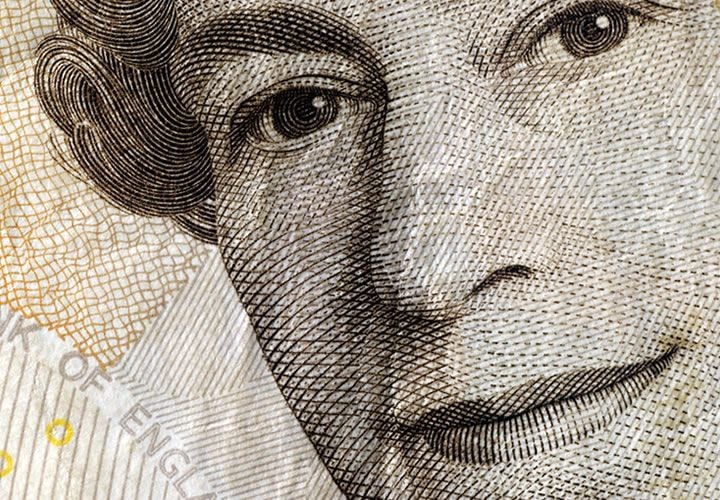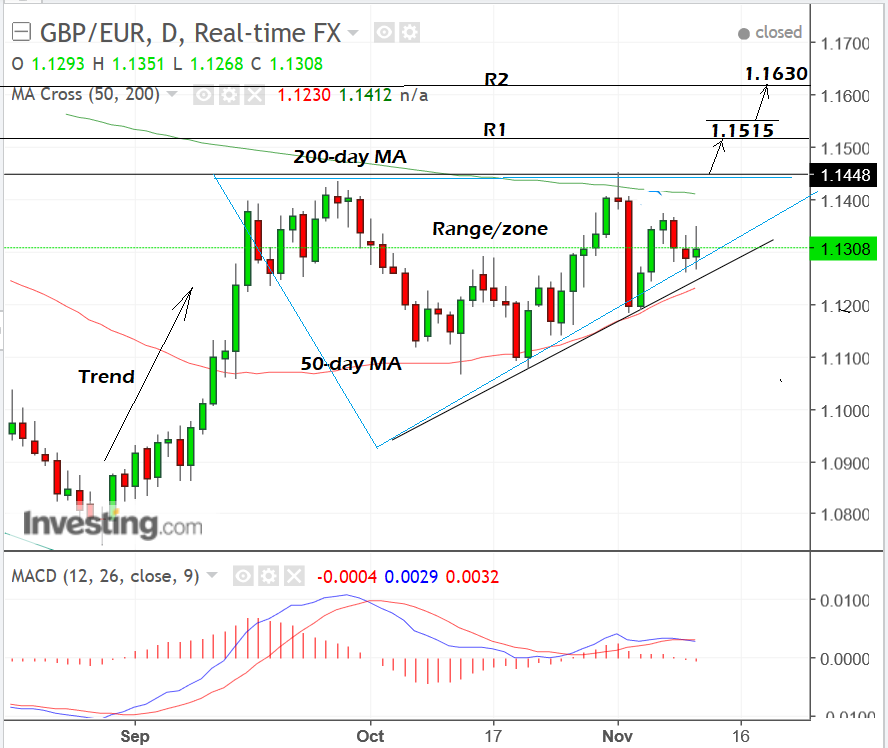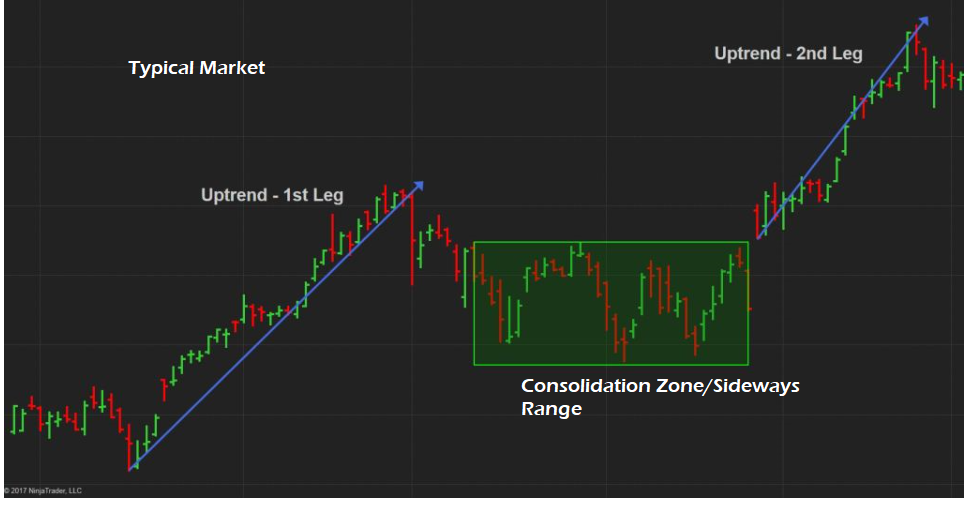Pound-to-Euro Rate this Week: Triangle Pattern on the Charts, Inflation and Employment Market Data in Focus

Pound Sterling remains little changed against the Euro at 1.1259 at the start of the new week with the exchange rate caught in a wait-and-see mode but some big data releases and ongoing domestic political intrigue could yield a more confident directional move.
Our technical studies of the Pound-to-Euro exchange rate market - the process of identifying patterns and indicators in order to predict future price action - shows the pair has been forming a range in the shape of a triangle pattern.
This triangle formation is consistent with the period of consolidation undertaken by the GBP/EUR exchange rate of late:

The question is where will the next move take us once this period of consolidation comes to an end?
The periods of consolidation often develop to reflect indecision amongst market participants as to whether assets prices should rise or fall, and it is only when that period of uncertainty ends that prices start to trend again.

Normally - but not always - the trend restarts in the same direction as it was going in before prices started to go sideways, which in the case of GBP/EUR is up (see arrow on first chart).
There is a slightly higher chance, therefore, of a breakout higher on GBP/EUR in line with the previous trend, but for confirmation of such a 'breakout' we would ideally wish to first see a break above the 1.1454 highs of November 1.
Such a break would then lead to a move up to a target at 1.1515, just below the R1 monthly pivot, which is a level that is likely to present an obstacle to further gains and so provides us with our first target.
Monthly pivots are levels developed by traders to assess how extended the market is.
They tend to act as areas of resistance where traders cluster orders counter to the dominant trend, which then tends to push the exchange rate back temporarily back down (in an uptrend).
In the case of a bullish breakout, we would expect R1 to be broken eventually and for the exchange rate to rise higher, to the next target at 1.1630 where another pivot - R2 - is situated.
A continuation higher, however, would require confirmation from a clear break above R1, signaled by a move above 1.1550.
Get up to 5% more foreign exchange by using a specialist provider by getting closer to the real market rate and avoid the gaping spreads charged by your bank for international payments. Learn more here.
Events and Data to Watch for the British Pound
Political factors will remain a key focus in the coming week.
They will probably revolve around two major issues: the first is the survival of the Prime Minister and the second the passage of the 'withdrawing bill' through parliament, which is the piece of legislation which will take the UK out of the EU.
The latest reports suggest that the number of rebel Tory MP's who want Theresa May to quit the party leadership has grown to 40 which is only 8 short of the number needed to trigger a leadership challenge.
If a mutiny emerges in the week ahead, it will destabilise the political and economic outlook and likely weigh heavily on the Pound - the Pound dislikes uncertainty and questions over the UK's political direction would weigh heavily, particularly as the prospect of an anti-market Labour party Government taking power becomes more likely.
Instability in the UK Government also of course has impacts on the UK's ability to negotiate on Brexit which remains critical to the Pound's outlook.
A change of leadership in the Conservative party would surely delay Brexit negotiations, while another general election would certaintly knock months of the timeline.
The other great issue is the 'withdrawal bill' which passes through Parliament this week. MP's will be debating final amendments to the bill - which provides the domestic legislation required to take the UK out of th EU - in the coming week.
One major point of contention is whether the bill should be changed to allow MP's a vote on the final Brexit deal negotiated with the EU. A number of Conservative MPs are expected to vote with Labour to force through changes to the bill, or at the very least block passage of the bill.
If this is indeed the case then the Government's fragile majority in the Houses of Parliament will be exposed, once again drawing questions over the Government's longevity.
Hard Data
This week sees a busy data calendar.
The main release in the coming week is inflation data on Tuesday, November 14, at 09.30 GMT, with October expected to see a rise of 3.1% compared to a year ago, which would represent a rise of 0.1% from the previous 3.0% result and see inflation hitting a new 2017 peak.
Such a rise in inflation would probably be marginally supportive of the Pound as it would increase in the chance the Bank of England (BOE) will raise interest rates again, perhaps even sooner than previously expected.
Nevertheless, the BOE themselves have forecast inflation peaking at 3.1% in October - but then rolling over - so it would take a sustained rise for several months to really support the Pound - or a shock rise in October of over the 3.1% expectation.
Higher interest rates strengthen currencies because they attract more inflows of foreign capital from global investors drawn by the promise of higher interest returns - and vice versa with lower interest rates.
Central banks control the base interest rate which all other banks use to set their interest rates.
When inflation is too high central banks raise interest rates to bring prices back down by encouraging saving over spending and discouraging borrowing by making it more expensive.
Another major release for the Pound over the next five days is employment data on Wednesday at 9.30 GMT.
The main focus will not be on the Unemployment rate, however, unless it is widely divergent from estimates, but rather on wage data.
This is because earnings are directly linked to inflation with a pick up in the former leading to a rise in the later.
Therefore a strong pick-up in earnings (Ex-bonus) which were 2.2% previously and are expected to moderate down to 2.1% would help Sterling, and vice-versa for a fall.
The final major release of the Pound is Retail Sales data on Thursday at 9.30.
On a monthly basis Retail Sales both Core is expected to rise from very depressed readings in September of -0.7% and -0.8% respectively, rising to 0.1% for both.
Compared to October last year, however - ie year-on-year - they are forecast to show a -0.4% fall for Core and -0.7% for headline compared to 1.6% and 1.2% respectively in October 2016.
The data is significant for the Pound because a further contraction in Retail Sales will increase concerns about growth and mean it is less likely the BOE will put up interest rates, resulting in weakness for Sterling.
Data and Events to Watch for the Euro
The main focus for Euro traders in the week ahead will probably be a speech by ECB President Mario Draghi on Tuesday, November 14 at 11.00 GMT.
His views on monetary policy will come under scrutiny.
Draghi has been hitherto cagey about when he sees the ECB ending its stimulus programme and starting to raise interest rates.
But a string of positive economic releases in the week before, and rumblings of dissent from a splinter group within the ECB who wish to see monetary policy 'normalised' - which means stimulus was withdrawn and interest rates raised more quickly, may have impacted on his views and if he puts forward more concrete proposals for the timing of policy changes the Euro could rally.
The other main release is the ZEW investor sentiment survey at 10.00 on Tuesday which is expected to see a small rise but is an important leading indicator for the economy.
Both the Eurozone Q3 GDP and CPI releases in the week ahead are second and final estimates respectively, which means they may only present revisions of the original first estimates which have already been released - thus the reaction to them is likely to be muted.
Get up to 5% more foreign exchange by using a specialist provider by getting closer to the real market rate and avoid the gaping spreads charged by your bank for international payments. Learn more here.




